
A taste of the Edo-period past, and a new encounter.
There’s a whole neighborhood of restaurants in the Asakusa area of Tokyo that specialize in loach cuisine. What is a loach? If you’ve been playing the new Animal Crossing game, or have ever played any Animal Crossing game ever, then you’ve probably caught a loach or two, and know that it’s a type of fish (who looks at you with reproach).
Actually, loach, or “dojou” in Japanese, is a delicacy whose popularity dates back to the Edo period (1603-1868), so it’s no surprise that it would be a popular food in Asakusa, which is a mecca for traditional Japanese food. Our Japanese-language reporter Seiji Nakazawa has always told himself that he should try it at least once. He’s never done it because, well, their menus tend to be a little on the expensive side, but heck, you only live once.
The particular restaurant that Seiji chose is called Hirai and is near Honjo-Azumabashi Station, which is on the Toei Asakusa subway line. The exterior of the place looks classy, like an expensive Japanese restaurant that serves multiple courses. Seiji was actually a bit nervous to go inside, but the interior is totally different. With just the owner and two waitresses working, it feels like a restaurant for the common people.
The menu has items like “dojou nabe” (loach hotpot, 2,240 yen [US$20]) and “yanagawa-nabe,” loach stewed in soy sauce with eggs and burdock root (2,350 yen). As expected, it was a little pricey, but Seiji was here for the experience, not a cheap meal. If he wanted a cheap meal he’d just go to Burger King.
After some deliberation, Seiji ordered the Edo classic, dojou nabe, which comes in a shallow single-serving pot.
The pot was filled with about 20 little fish, but to Seiji, they looked more like little eels. “Are these really fish?” he thought, peering at them closely.
And that’s when Seiji realized he had never actually seen loach before.
It was kind of a shock. Seiji had assumed that he had encountered loach in some capacity in all of his 37 years on this earth, but in fact, he had not. The little stewed fish that sat in front of him were his first encounter.
This led Seiji to reflect back on his life to find the real reason why he had never seen a loach before. He wasn’t a city kid; he grew up the countryside. When he was a child, he could bike to the mountains in ten minutes, and on his way to school he would pass rice fields and cow sheds, so he’d spent his formative years exploring the wilds of his hometown.
So how, in the twenty-something years he had lived there, had he never seen loach in the rice paddies or little rivers? It was immensely shocking to realize that his first meeting with a loach was in a hot pot.
Well, anyway, he was here for lunch, so he dug right in. His first impression of the loach: its bones are really substantial. In fact it felt as if the fish was primarily made of bone, with a little bit of soft meat around it that reminded him of anago eel meat.
Luckily, the restaurant also serves “nuki nabe” (2,350 yen), which contains loach without the bones and innards. In this stew, the meat of the fish is flayed and looks far more substantial than the fish whole. After giving this new hotpot a taste, Seiji got a much better feel for the flavor of loach.
The meat is fluffy and soft, but not as oily as eel meat. It feels like a cross between white fish and anago eel, and has a slightly bitter flavor. When combined with a sweet and spicy sauce or flavoring, loach is most definitely a mature flavor. Was this the taste of Edo cuisine? He thought perhaps, yes. The harmony of the bitterness reminded him of sushi served with wasabi, another Edo delicacy.
Though it was Seiji’s first time ever seeing a loach, he couldn’t say it was a bad encounter. The flavor reminded him of the country roads of his home town, and gave him a sense of traveling back in time to the Edo period. He learned much from his first meeting with loaches. They provided a flavor that tied the past to the present, a symbol of culture in and of itself.
Restaurant Information
Dojou Hirai / どぜう ひら井
Tokyo-to Sumida-ku Azumabashi 1-7-8
東京都墨田区吾妻橋1-7-8
Open 11:30 a.m.-2 p.m., 5 p.m.-9:30 p.m.
Closed: Sundays
Photos © SoraNews24
● Want to hear about SoraNews24’s latest articles as soon as they’re published? Follow us on Facebook and Twitter!
[ Read in Japanese ]

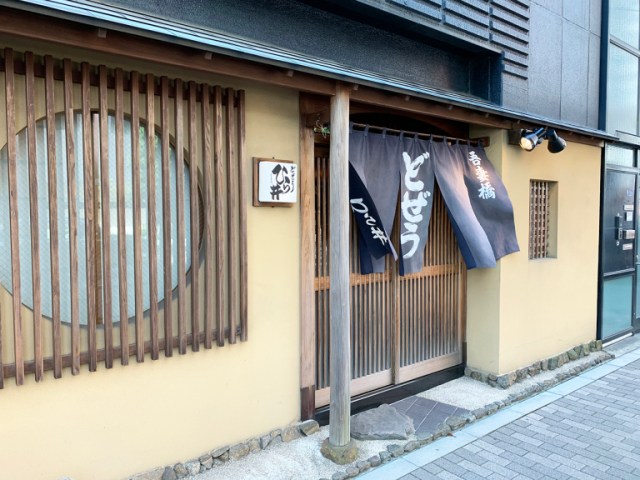
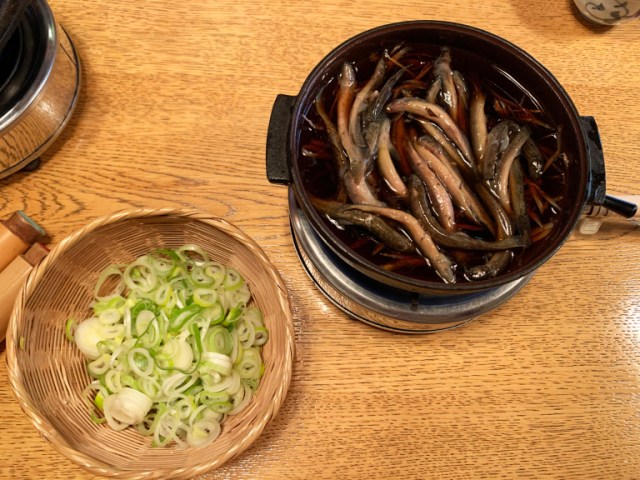
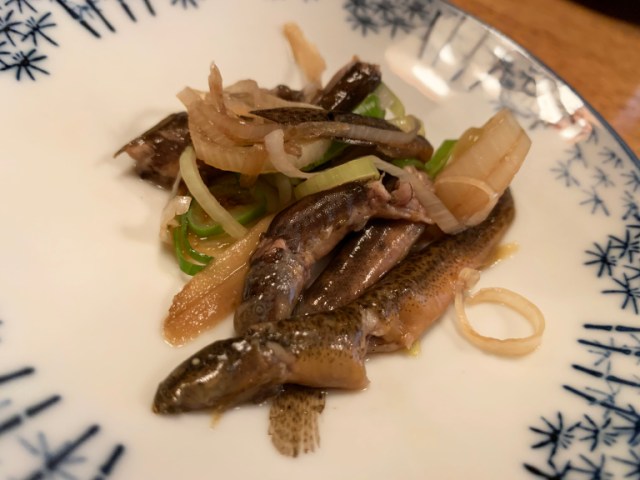
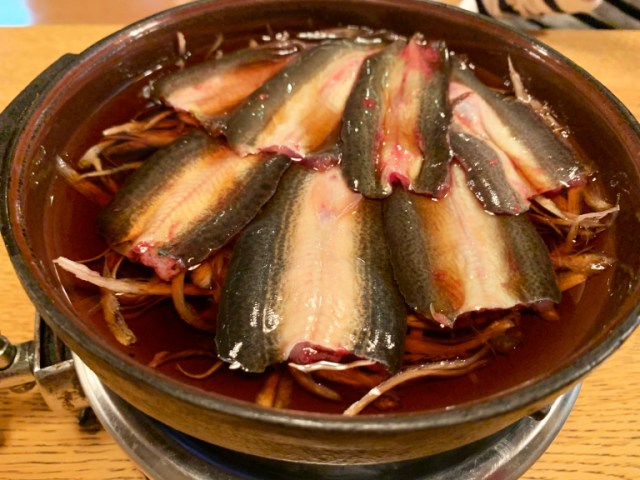
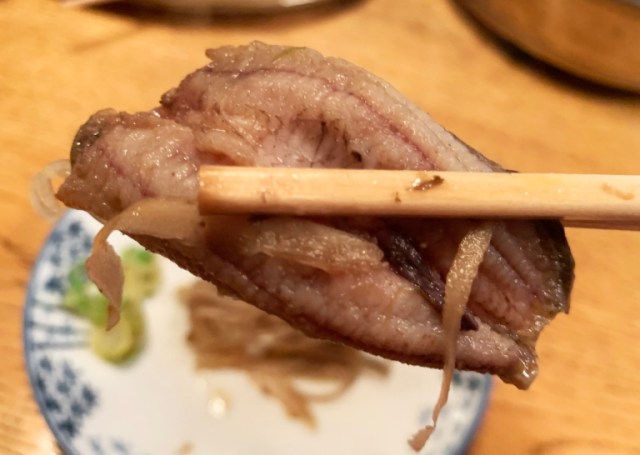
 How to pick out the best anago eel and other things we learned at the anago processing center
How to pick out the best anago eel and other things we learned at the anago processing center Noodle joint in Harajuku becomes a hot topic with foreigners on Reddit, but is it any good?
Noodle joint in Harajuku becomes a hot topic with foreigners on Reddit, but is it any good? “Hey, Japanese taxi driver, take us to the best seafood joint in Otaru!”
“Hey, Japanese taxi driver, take us to the best seafood joint in Otaru!” Put down the soy sauce! We try a new “expert” way to season your sushi【Taste test】
Put down the soy sauce! We try a new “expert” way to season your sushi【Taste test】 This is the one and only kakuni pork bowl restaurant in Tokyo, and it’s amazing
This is the one and only kakuni pork bowl restaurant in Tokyo, and it’s amazing Foreigner’s request for help in Tokyo makes us sad for the state of society
Foreigner’s request for help in Tokyo makes us sad for the state of society Ghibli Park now selling “Grilled Frogs” from food cart in Valley of Witches
Ghibli Park now selling “Grilled Frogs” from food cart in Valley of Witches Japanese city loses residents’ personal data, which was on paper being transported on a windy day
Japanese city loses residents’ personal data, which was on paper being transported on a windy day Harajuku Station’s beautiful old wooden building is set to return, with a new complex around it
Harajuku Station’s beautiful old wooden building is set to return, with a new complex around it Historical figures get manga makeovers from artists of Spy x Family, My Hero Academia and more
Historical figures get manga makeovers from artists of Spy x Family, My Hero Academia and more Suntory x Super Mario collaboration creates a clever way to transform into Mario【Videos】
Suntory x Super Mario collaboration creates a clever way to transform into Mario【Videos】 We try McDonald’s Japan’s new teriyaki burgers
We try McDonald’s Japan’s new teriyaki burgers Princesses, fruits, and blacksmiths: Study reveals the 30 most unusual family names in Japan
Princesses, fruits, and blacksmiths: Study reveals the 30 most unusual family names in Japan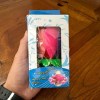 Celebrate another year of life by putting it in jeopardy with this birthday candle flower
Celebrate another year of life by putting it in jeopardy with this birthday candle flower Smash Bros. director Sakurai stabs Kirby in the face, has delicious justification for it
Smash Bros. director Sakurai stabs Kirby in the face, has delicious justification for it McDonald’s new Happy Meals offer up cute and practical Sanrio lifestyle goods
McDonald’s new Happy Meals offer up cute and practical Sanrio lifestyle goods Japanese ramen restaurants under pressure from new yen banknotes
Japanese ramen restaurants under pressure from new yen banknotes French Fries Bread in Tokyo’s Shibuya becomes a hit on social media
French Fries Bread in Tokyo’s Shibuya becomes a hit on social media Studio Ghibli releases new action figures featuring Nausicaä of the Valley of the Wind characters
Studio Ghibli releases new action figures featuring Nausicaä of the Valley of the Wind characters New private rooms on Tokaido Shinkansen change the way we travel from Tokyo to Kyoto
New private rooms on Tokaido Shinkansen change the way we travel from Tokyo to Kyoto Red light district sushi restaurant in Tokyo shows us just how wrong we were about it
Red light district sushi restaurant in Tokyo shows us just how wrong we were about it Tokyo Tsukiji fish market site to be redeveloped with 50,000-seat stadium, hotel, shopping center
Tokyo Tsukiji fish market site to be redeveloped with 50,000-seat stadium, hotel, shopping center All-you-can-drink Starbucks and amazing views part of Tokyo’s new 170 meter-high sky lounge
All-you-can-drink Starbucks and amazing views part of Tokyo’s new 170 meter-high sky lounge Beautiful Ghibli sealing wax kits let you create accessories and elegant letter decorations【Pics】
Beautiful Ghibli sealing wax kits let you create accessories and elegant letter decorations【Pics】 Studio Ghibli releases Kiki’s Delivery Service chocolate cake pouches in Japan
Studio Ghibli releases Kiki’s Delivery Service chocolate cake pouches in Japan New definition of “Japanese whiskey” goes into effect to prevent fakes from fooling overseas buyers
New definition of “Japanese whiskey” goes into effect to prevent fakes from fooling overseas buyers Our Japanese reporter visits Costco in the U.S., finds super American and very Japanese things
Our Japanese reporter visits Costco in the U.S., finds super American and very Japanese things Studio Ghibli unveils Mother’s Day gift set that captures the love in My Neighbour Totoro
Studio Ghibli unveils Mother’s Day gift set that captures the love in My Neighbour Totoro More foreign tourists than ever before in history visited Japan last month
More foreign tourists than ever before in history visited Japan last month New Pokémon cakes let you eat your way through Pikachu and all the Eevee evolutions
New Pokémon cakes let you eat your way through Pikachu and all the Eevee evolutions Sales of Japan’s most convenient train ticket/shopping payment cards suspended indefinitely
Sales of Japan’s most convenient train ticket/shopping payment cards suspended indefinitely Sold-out Studio Ghibli desktop humidifiers are back so Totoro can help you through the dry season
Sold-out Studio Ghibli desktop humidifiers are back so Totoro can help you through the dry season Japanese government to make first change to romanization spelling rules since the 1950s
Japanese government to make first change to romanization spelling rules since the 1950s Ghibli founders Toshio Suzuki and Hayao Miyazaki contribute to Japanese whisky Totoro label design
Ghibli founders Toshio Suzuki and Hayao Miyazaki contribute to Japanese whisky Totoro label design Doraemon found buried at sea as scene from 1993 anime becomes real life【Photos】
Doraemon found buried at sea as scene from 1993 anime becomes real life【Photos】 Tokyo’s most famous Starbucks is closed
Tokyo’s most famous Starbucks is closed One Piece characters’ nationalities revealed, but fans have mixed opinions
One Piece characters’ nationalities revealed, but fans have mixed opinions We asked a Uniqlo employee what four things we should buy and their suggestions didn’t disappoint
We asked a Uniqlo employee what four things we should buy and their suggestions didn’t disappoint Crazy-huge triple-decker wagyu hamburger steak will draw you to Akihabara even if you hate anime
Crazy-huge triple-decker wagyu hamburger steak will draw you to Akihabara even if you hate anime Calling all fans of anpan! You can try 20 kinds of anpan at this specialty shop in Asakusa
Calling all fans of anpan! You can try 20 kinds of anpan at this specialty shop in Asakusa Yaizu: Japan’s best sushi market destination even most foodies in Japan have never heard of
Yaizu: Japan’s best sushi market destination even most foodies in Japan have never heard of Our Japanese reporter eats instant ramen from a bag for (almost) the first time in his life
Our Japanese reporter eats instant ramen from a bag for (almost) the first time in his life Seoul Cafe’s mint chocolate shaved ice is unlike any other shaved ice around【Photos】
Seoul Cafe’s mint chocolate shaved ice is unlike any other shaved ice around【Photos】 Resol Poshtel: Cheap capsule hotel in Tokyo is a hit with overseas visitors, and we find out why
Resol Poshtel: Cheap capsule hotel in Tokyo is a hit with overseas visitors, and we find out why Crazy expensive “phantom beef” instant curry — Dream come true or edible nightmare?【Taste test】
Crazy expensive “phantom beef” instant curry — Dream come true or edible nightmare?【Taste test】 What happens when you cook beer with potato chips in a rice cooker?
What happens when you cook beer with potato chips in a rice cooker? English-language Reddit falls in love with curry restaurant– Can it win our taste tester’s heart?
English-language Reddit falls in love with curry restaurant– Can it win our taste tester’s heart? We encountered the most frightening fried chicken in Ameyokocho in Tokyo, and ate it anyway
We encountered the most frightening fried chicken in Ameyokocho in Tokyo, and ate it anyway We try cooking yakisoba with real Japanese buckwheat soba【SoraKitchen】
We try cooking yakisoba with real Japanese buckwheat soba【SoraKitchen】 These Pakistani students in Tokyo had never been to the beach, and that’s something we had to fix
These Pakistani students in Tokyo had never been to the beach, and that’s something we had to fix “Hey, Japanese taxi driver, take us to the best Sapporo ramen place!” – Things don’t go as planned
“Hey, Japanese taxi driver, take us to the best Sapporo ramen place!” – Things don’t go as planned The best Japanese curry in Japan isn’t eaten at a restaurant
The best Japanese curry in Japan isn’t eaten at a restaurant Amazon Japan are selling Uber Eats backpacks and they’re surprisingly useful
Amazon Japan are selling Uber Eats backpacks and they’re surprisingly useful
Leave a Reply